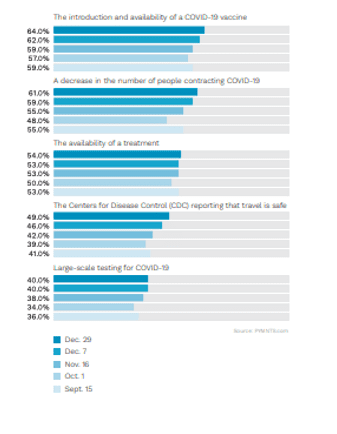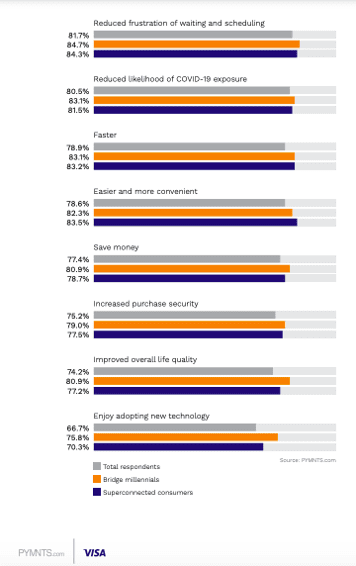Pandemic Surge Slows Consumer Spending; December Retail Sales Drop

The momentum of the new pandemic surge was too much for consumer spending to overcome, according to new data released Friday (Jan. 15). With infection rates climbing, consumers tightened the reins on their spending in December, despite it being the peak of the holiday shopping season.
According to Commerce Department figures, consumer spending fell a seasonally adjusted 0.7 percent in December, the third straight monthly decline according to the federal numbers. Discounting automobile and gasoline purchases, the drop was even deeper — 2.1 percent. Economists surveyed by The Wall Street Journal had forecast a lower dip of 0.1 percent for December the previous month in advance of the major COVID-19 spike.
The drops were extensive across all categories: bars and restaurants, electronics, grocery and department stores. The areas to see improvement during the month were home improvement, health and personal-care products, clothing and gasoline. Moreover, data from J.P. Morgan Chase & Co indicates that the retail sales slowdown has been persistent as it reported a 1.1 percent decline in spending from a year earlier in the week through Jan. 10.
The data is not surprising in the context of almost a year’s worth of PYMNTS data on COVID-19 and its effect on consumer shopping attitudes and behaviors. Consumers have made it clear that the pandemic is the driving factor behind their shopping behavior and their willingness to re-engage with the physical world. Consumers have also made it clear that the rollout of a functional vaccine and a drop in case numbers are the No. 1 and No. 2 factors the average customer is looking at before they even consider getting back out there and to normal.
But as of early 2021, the vaccine is out, and though the rollout in the U.S. has been slower than initially hoped, it is coming. PYMNTS early surveys on vaccination intention, however, show roughly 38 percent of consumers say they do not plan to get a vaccine — and for the vaccine to be fully effective in creating herd immunity approximately 80 percent of people need to get the vaccine. But opinions have slowly been changing as the vaccine has rolled out, and it seems to be the case that the end is in sight. Eventually.

In the absence of a pandemic decline, merchants, including small to medium-sized businesses (SMBs) have pivoted to the digital-first economy. That trend will need to continue, according to Visa Head of Global Business Solutions Kevin Phalen. “The good thing is, despite all of those negatively impacted to the point of failure, the businesses that have embraced digitization and new technology are actually more optimistic because they believe their client base has expanded. They have found new clients through embracing this digital transformation,” Phalen told Karen Webster in a recent conversation.
That engagement, he noted, will only become more important when dry land is reached, not less so. The digital transformation is not a phase, but a genuine switch in consumer habits and preferences. That assertion is again supported by PYMNTS survey data which demonstrates that consumers like the new digital habits they’ve put into place — and will likely stick with them.
Because while avoiding infection makes the list of reasons consumers chose to go digital, as the pandemic went on it increasingly stopped being the leading reason. The main reason consumers are seeking out new digital experiences is because they are more convenient — they are faster, easier and involve less time and aggravation to follow through on. It is the kind of preference for convenience that will last long after the pandemic period has officially ended.
As for the current consumer spending shortfall, according to the WSJ there are some signs that the second round of stimulus payments to households signed into law Dec. 27 are already starting to have a positive effect on consumer spending. According to the NPD Group, sales at discretionary retailers increased 27 percent in the week ending Jan. 9 — the largest lift in retail since the start of the COVID-19 pandemic. And more stimulus relief funds, according to recent reports, may soon be on the way following the inauguration of Joe Biden, as the president-elect has vowed to boost stimulus funds to $2,000 per eligible citizen.
But even if spending makes an early comeback, care of the next round of federal dollars, the smart expectation will be that many of those funds are going to flow across digital channels.
Read More On Retail:
- Consumers Are Springing for Nice Beers, but Not Premium Liquor
- Mother’s Day Spending Expected to Dip Following 2023 Record
- GoDaddy Debuts Pocket-Sized POS for Small Businesses
- Consumers Want Friction-Free Shopping on Connected Devices